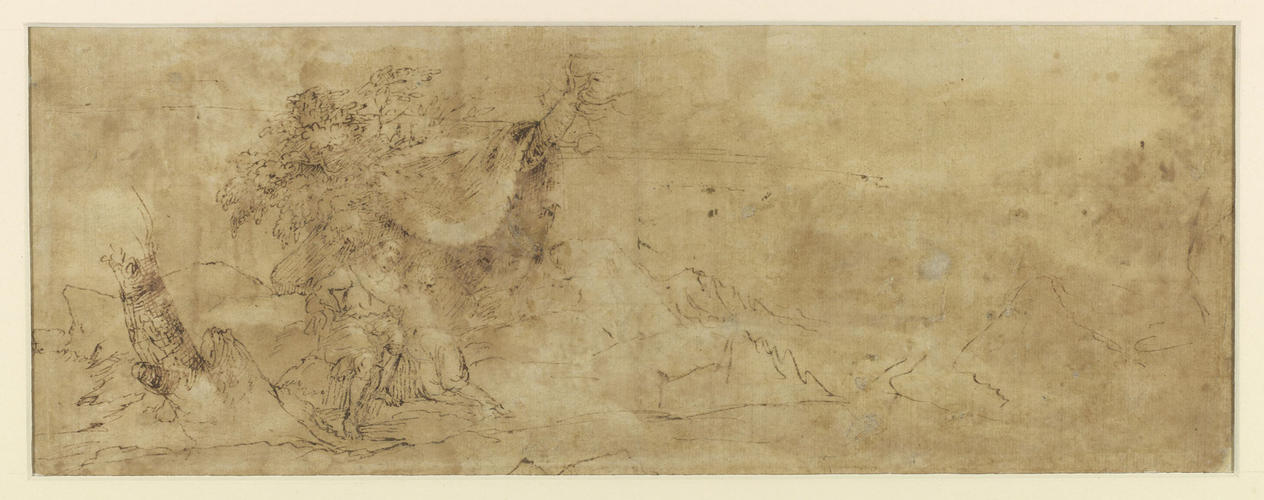Acis and Galatea 1657
Pen and ink with wash and white heightening, over black and a little red chalk, on paper washed brown | 35.3 x 46.5 cm (sheet of paper) | RCIN 913077
-
A drawing of Acis and Galatea embracing in a rocky landscape with Polyphemus playing pipes above. On the verso is the same design traced through.
Claude moved to Rome as a youth and worked there for the rest of his life. This is a study for a painting depicting the myth of Acis and Galatea, as recounted in Ovid’s Metamorphoses. The cyclops Polyphemus was infatuated with the sea-nymph Galatea, but was spurned by her in favour of the youth Acis. Here Acis and Galatea embrace, while Polyphemus sits with his flocks in the distance, playing his pipes and singing the praises of Galatea.
In 1657 Claude executed a pair of paintings depicting Acis and Galatea (Gemäldegalerie, Dresden) and the Transformation of the Apulian Shepherd (collection of the Duke of Sutherland). In the first painting, Claude faithfully followed the story of Acis and Galatea as recounted in Book 13 of Ovid’s Metamorphoses. The cyclops Polyphemus was infatuated with the sea-nymph Galatea; spurned by her in favour of the youth Acis, Polyphemus sat with his flocks on a promontory overlooking the sea and, playing his pipes, he sang her praises.
In the Royal Collection are elaborate drawings for each of the two paintings, though in neither case does the composition agree closely with the canvas. The Dresden painting corresponds approximately in the figures of Acis and Galatea before their draped bower, though the landscape - while still a coastal scene with a mountain to the right - was wholly transformed. Despite their size and care of execution, the drawings must be regarded as interim attempts to assess the balance of the composition: in both cases the figures were traced through to the backs of the sheets (thus reversing them), allowing Claude to experiment by surrounding them with new landscapes.
Claude’s Liber veritatis (his drawn record of his paintings, now in the British Museum) states that both paintings were faict pour mr Delagard. While the identity of this patron is not known with certainty, Boyer’s suggestion that he could have been Pierre-Gilbert de La Garde (d. 1659), a member of the household of Louis XIV, or more probably his son Jacques de La Garde (c.1634-84) is very plausible.
Catalogue entry adapted from The Art of Italy in the Royal Collection: Renaissance and Baroque, London, 2007Provenance
Royal Collection by c.1810
-
Creator(s)
-
Medium and techniques
Pen and ink with wash and white heightening, over black and a little red chalk, on paper washed brown
Measurements
35.3 x 46.5 cm (sheet of paper)
Object type(s)
Other number(s)
RL 13077










